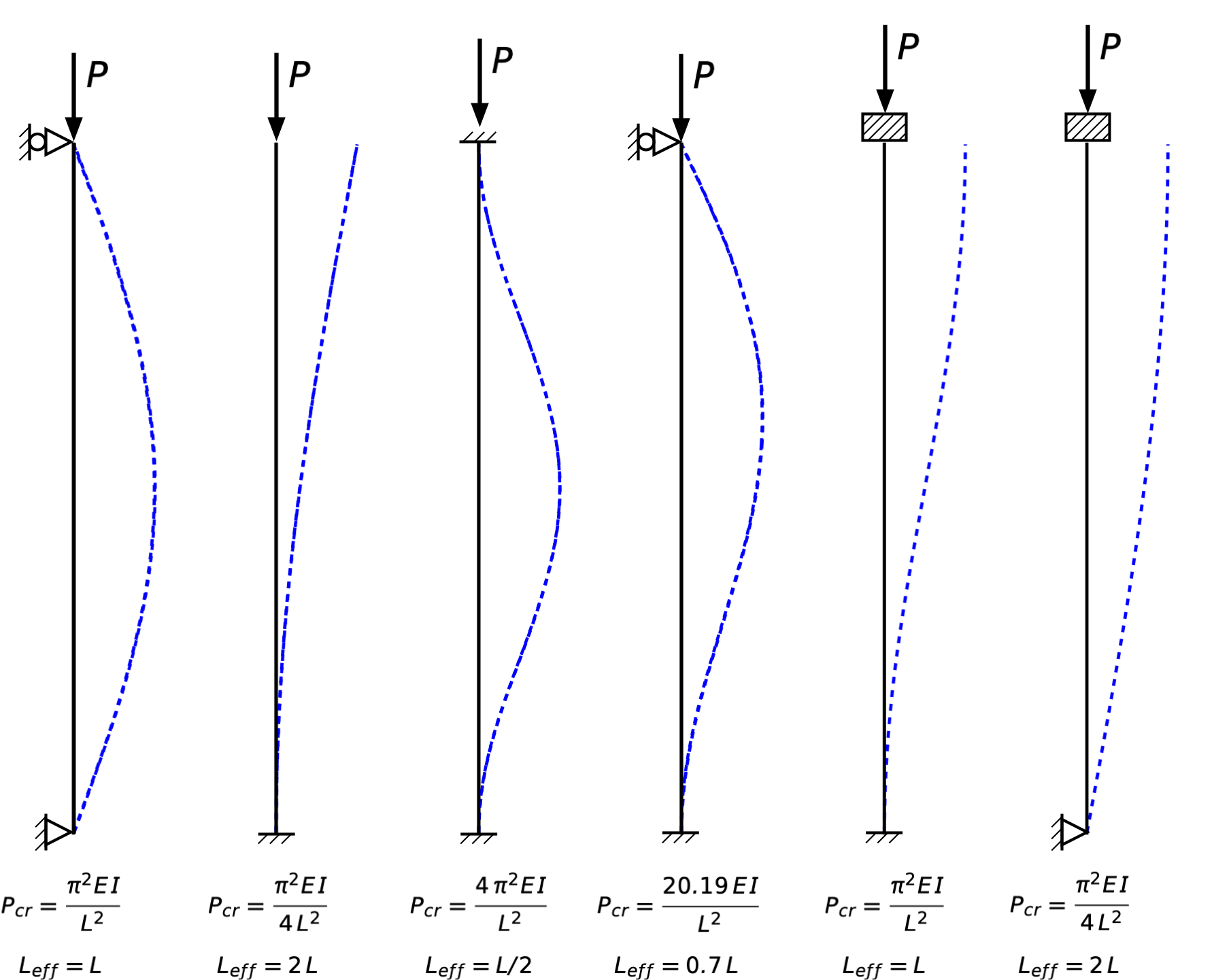Tangents and columns
July 1, 2024 at 2:35 PM by Dr. Drang
Continuing with John D. Cook posts, I should write up a little thing that I meant to post about a month ago. It was in response to this post of Cook’s in which he considers solutions to the equation
Cook talks about the solution in terms of the sinc function and Bessel functions, but my immediate response upon seeing that equation was a single number: 4.49. I first saw this equation over 40 years ago and the solution—or at least one of the solutions—has been stuck in my head ever since.
As Cook shows in his post, the best way to think about solutions to this equation is to consider two separate equations,
and plot them both on the same graph. Wherever we see intersections will be solutions to .

As you can see, there are an infinite number of solutions. The obvious one, which you probably didn’t need the graph to figure out, is . After that are solutions that are relatively close to the asymptotes of the tangent function at the odd multiples of (excluding ).
While the graph helps you figure out where the solutions are, you’ll still have to use some numerical technique to get the value. You might think that direct iteration,
would work, but if you try it, you’ll soon find yourself diverging instead of converging. The reasons are given in this blog post from a few years ago. A direct iteration formula that will converge is
where the added term accounts for the fact that the inverse tangent function returns values between and . If you start with a number just under , this formula will quickly converge to the solution that’s circled in the graph.
The circled intersection is the lowest postive solution. That’s 4.4934094579…, or just 4.49 for short, which is the solution that matters in one of the standard problems of column buckling and is the reason I’ve remembered it all these years.
Column buckling is governed primarily by the restraints, if any, at the column ends. Four types of ends are considered standard:
- A simply-supported end is prevented from moving laterally but has no restrictions on rotation.
- A fixed end is prevented from both lateral movement and rotation.
- A free end has no restrictions on either lateral movement or rotation.
- A guided end is prevented from rotating but has no restrictions on lateral movement.
The six standard column types come from combinations of these four end conditions. Here’s a graphical representation of the columns and the shapes they take on when they buckle. Sorry about the size of the formulas—you can zoom in to get a better view.

From left to right, they are
- Simple-simple
- Fixed-free
- Fixed-fixed
- Fixed-simple
- Fixed-guided
- Simple-guided
Under each column is its elastic buckling load, denoted as , where is the elastic modulus of the material, is the moment of inertia of the cross-section, and is the length. The simple-simple column is considered the most fundamental, probably because it has the least complicated and easiest to remember formula. The other column types are related to the simple-simple column through the concept of effective length, . If you take the effective length of any of the other columns and plug it into
you’ll get the buckling load for that type of column.
So where does 4.49 come into this? Well, in solving for the buckling load of the fixed-simple column, you run into the equation
where
The buckling load is the lowest non-zero value of that satisfies this equation.
And if we put this in the form
we get , which we can round to with little error.
Variations on the image above are found in many structural engineering books. For example, here’s the table of basic columns from Johnson, Lin, and Galambos’s Basic Steel Design, the textbook used in my first steel design class.

The authors have ordered the columns in this table according to their effective length. I put the columns in the order they’re typically taught.
I took my first steel design class my senior year, so that’s when I learned that the effective length of a fixed-simple column is . But I didn’t learn how to derive that solution until I was in grad school the next year. It’s pretty simple, which should give you a hint about the next blog post.
